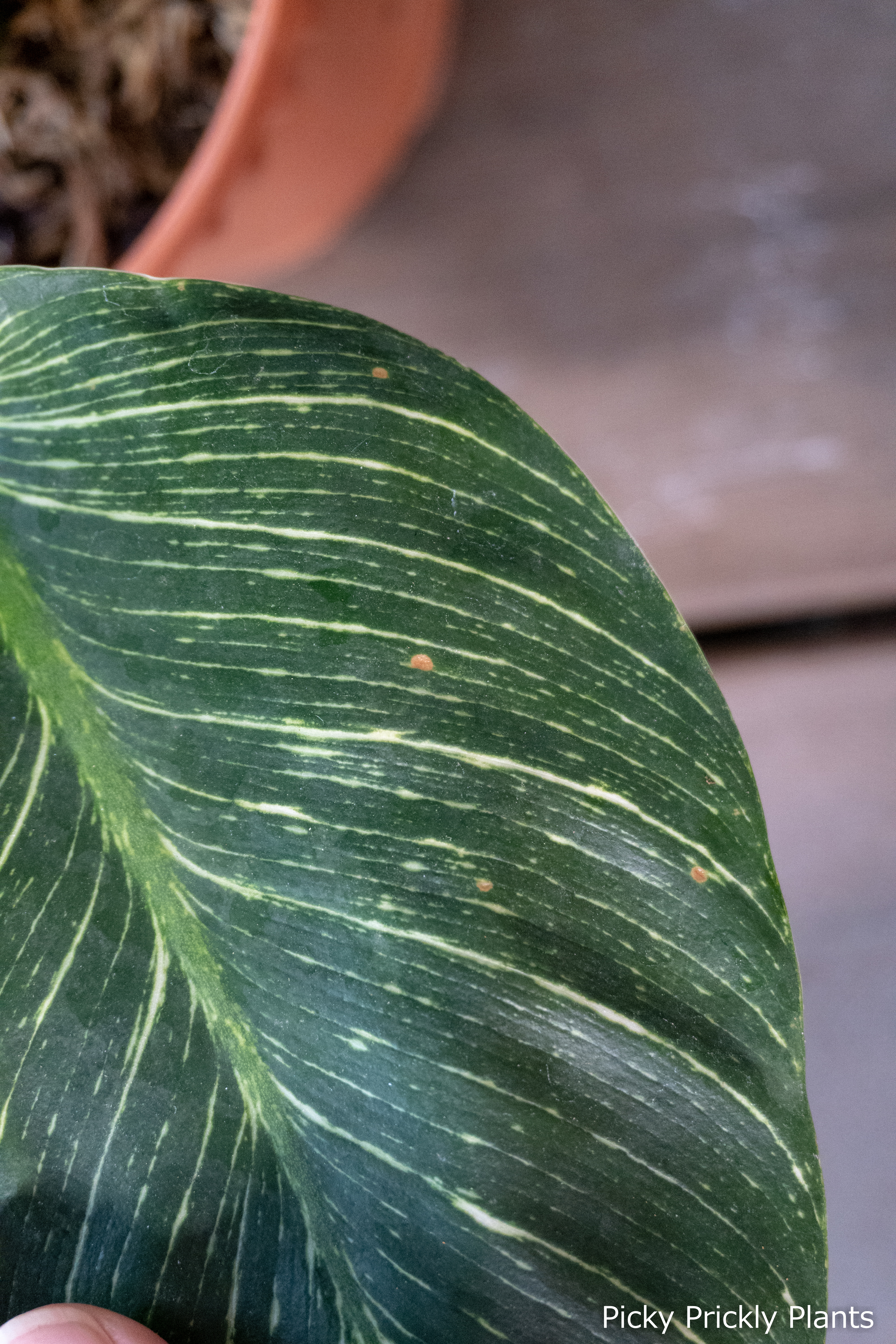We first noticed it on our Philodendron Birkin. Small little reddish-brown spots that appeared on some of the leaves. We researched a little and found out that the spots could be caused by fungus.


There are many different kinds of brown spots and it is not easy to identify the root cause. Read here to find out how to identify common causes for the brown spots.
What can you to do treat fungal infection on plants?
1. Avoid overwatering
Firstly, evaluate how you are watering your plants. Try your best to water only when the first few inches of your soil is dry. This is easier said than done especially when your collection grows (first-hand experience by us 😔). It is okay to skip watering for a few days if the weather is humid. Depending on the plant, one or two days without water usually will not kill a plant.
2. For immediate treatment, use a systemic fungicide
If you’re looking for an immediate solution, mist and water your plants with a fungicide. We do this especially when the weather starts to cool down and become more humid. Use a systemic fungicide like Propiconazole (Stilt) that will be absorbed by the plant. Stilt is most effective against rust but it also works on other types of fungus. Captan powder can be used as well but it is only effective as a preventive measure because it only kills fungus spores.
3. Improve the drainage of your soil
Thirdly, improve soil drainage. We have posted about the basics of preparing your own media so do read that if you are new to this. On top of the water, roots also need oxygen. Your job is to prevent your soil from being saturated with water so that there are air pockets in the soil. Store-bought media usually retains too much water so do beware.
We have been using more coconut husks as a soil additive. Coconut husks are not only easy to find, they also a renewable source. Mixing them into the media helps to retain moisture and also allow aeration for the roots of your plants. Check out our post on comparing a few different types of commonly found products from Horti if you are interested to get them.

4. Ventilate the air around the plant
Finally, improve the ventilation around your plants and not let water stay on the leaves for too long. We use a fan that is set on a timer to circulate the air, especially during wet weathers. Moving air helps to dry out excess water on the leaves and allows the plant to transpire more effectively.
If you are living in a dry climate, having too much ventilation might dry out your plants too quickly so beware.

Hope you learned something from this! If you are still not sure, comment below with a photo of your plant and we can investigate together. Till next time! 🤗


2 thoughts on “Treating fungal infection on foliage plants”